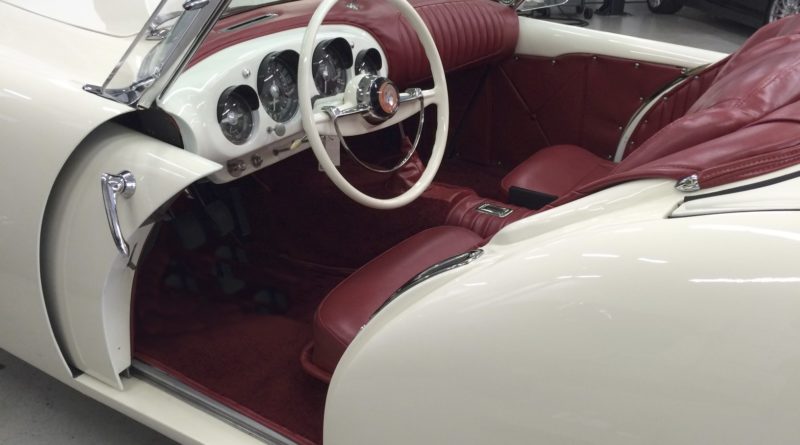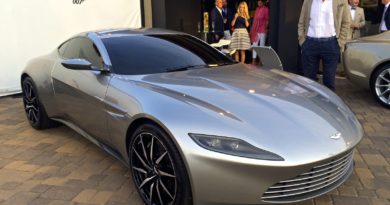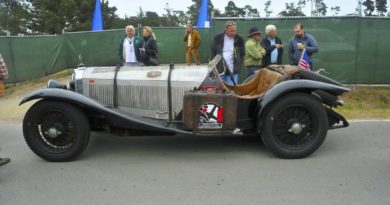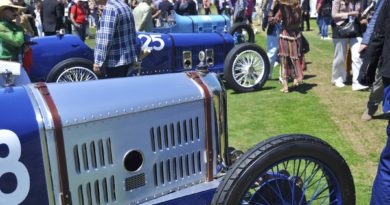A Car with a Pocket Door
I stumbled onto this Kaiser Darrin at Park Place in Bellevue, WA. It was just sitting in a service bay next to a group of Aston Martins. Only 435 of these cars were built. It was the first American production sports car to use a fiberglass body, but it was followed closely by Ford’s Thunderbird and GM’s Corvette. Kaiser was started by industrialist Henry Kaiser and Joseph Frazer in 1945, producing several other cars in the process. As a boater, it was interesting for me to note that much of the fiberglass body was produced by Glasspar, who was a major ski boat manufacturer. Kaiser Motors only lasted until August of 1954.
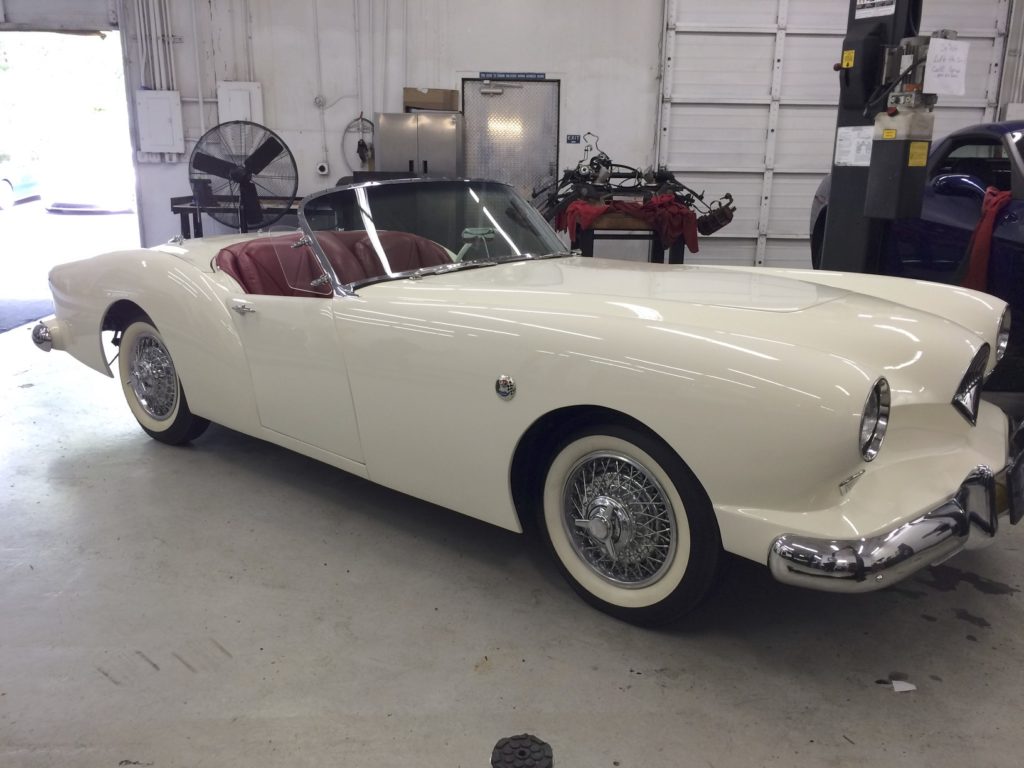
Designer of the 1954 Darrin, American Howard “Dutch” Darrin, actually began coachbuilding in France. In 1923 he formed Hibbard & Darrin with Thomas Hibbard of LeBaron fame, designing cars for many of the prominent brands of the day. Thomas had met Darrin in New York, and figured correctly that the flamboyant WWI flying ace, inventor and founder of Aero Ltd, one of France’s first airline carriers, would make an excellent partner. Hibbard & Darrin was very successful through the 1920s building some 500 coach built cars, but the Great Depression ended the partnership in 1931. Thomas hung on for awhile in Paris doing part-time design work, but soon left to become chief designer at Cadillac. Darrin stayed in Europe designing with Fernandez et Darrin until returning to California in 1937 to open a coachwork shop in Hollywood. A champion polo player and worldly bon vivant, it is said Darrin only left France when Hollywood director Darryl F. Zanuck told him the polo was better in California!
From California he designed for Packard, General Motors and Kaiser. It was a stormy relationship with Kaiser, however, as they routinely opted for more conservative designs than Darrin promoted. The Kaiser Darrin was the major exception, and only really occurred because Darrin paid to develop the prototype himself and because Kaiser’s wife really liked the car. Henry Kaiser also settled an internal dispute about what to name the car – he simply acknowledged Darrin by putting his name on it.
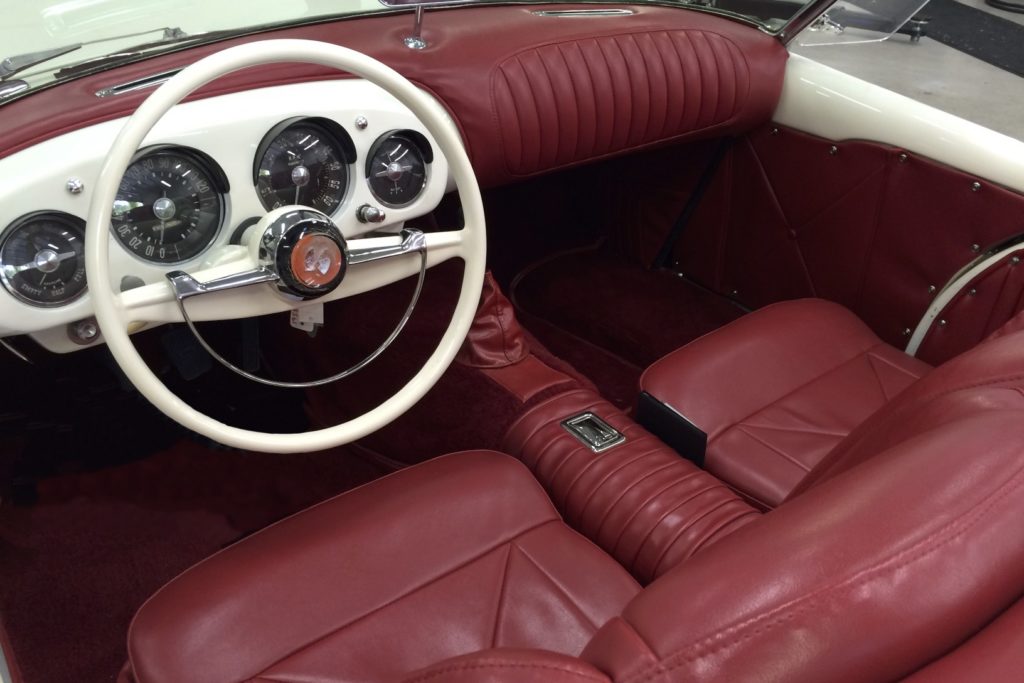
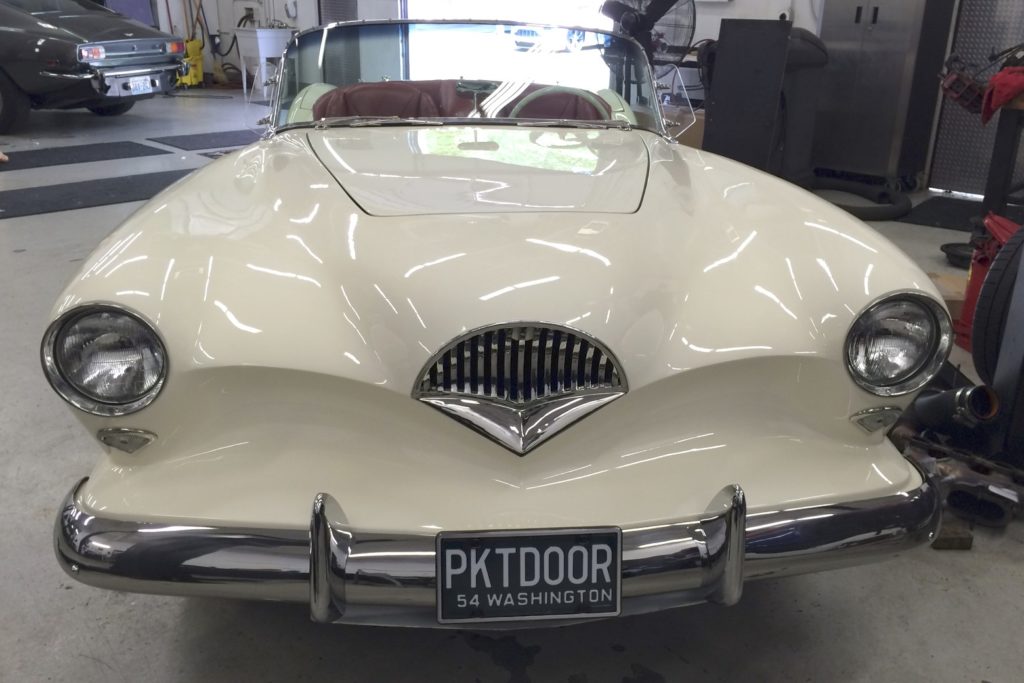
Darrin, the car, had several innovations like seat belts and a padded dash, but the most extraordinary were the pocket doors. In the end, however, there was not enough consumer confidence that Kaiser could sell cars at a rate that would guarantee their continued existence. So, despite a merger with Willys-Overland, production ceased at Kaiser in 1954.
Meanwhile, Howard Darrin had purchased 50 Darrins that were damaged in a snow storm as well as another 100 or so that had remained unsold from the factory. He shipped them to California to sell in his Hollywood showroom. He then had several of the cars refitted with superchargers on the 6-cyl engines to make performance more acceptable for the rather expensive asking price of over $3,600. The last few cars were refitted with GM V8s boasting 305 HP, and he sold those as Kaiser-Darrin Specials for $4350. With a top speed of over 145 MPH, some of these cars were even raced. One such owner was Lucie Bedford, the later-to-be wife of wealthy American car builder and LeMans racer, Briggs Cunningham. By 1957, the last of the Specials were finally sold. Today these cars are worth about $90,000.

